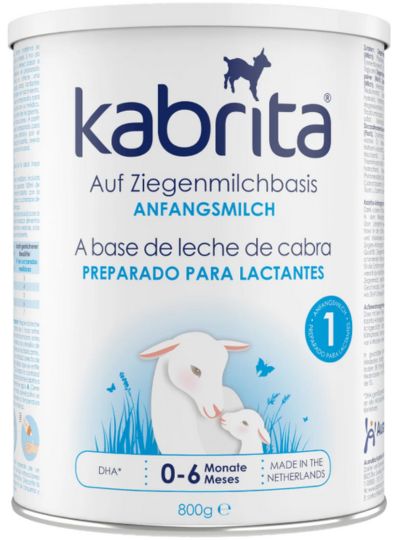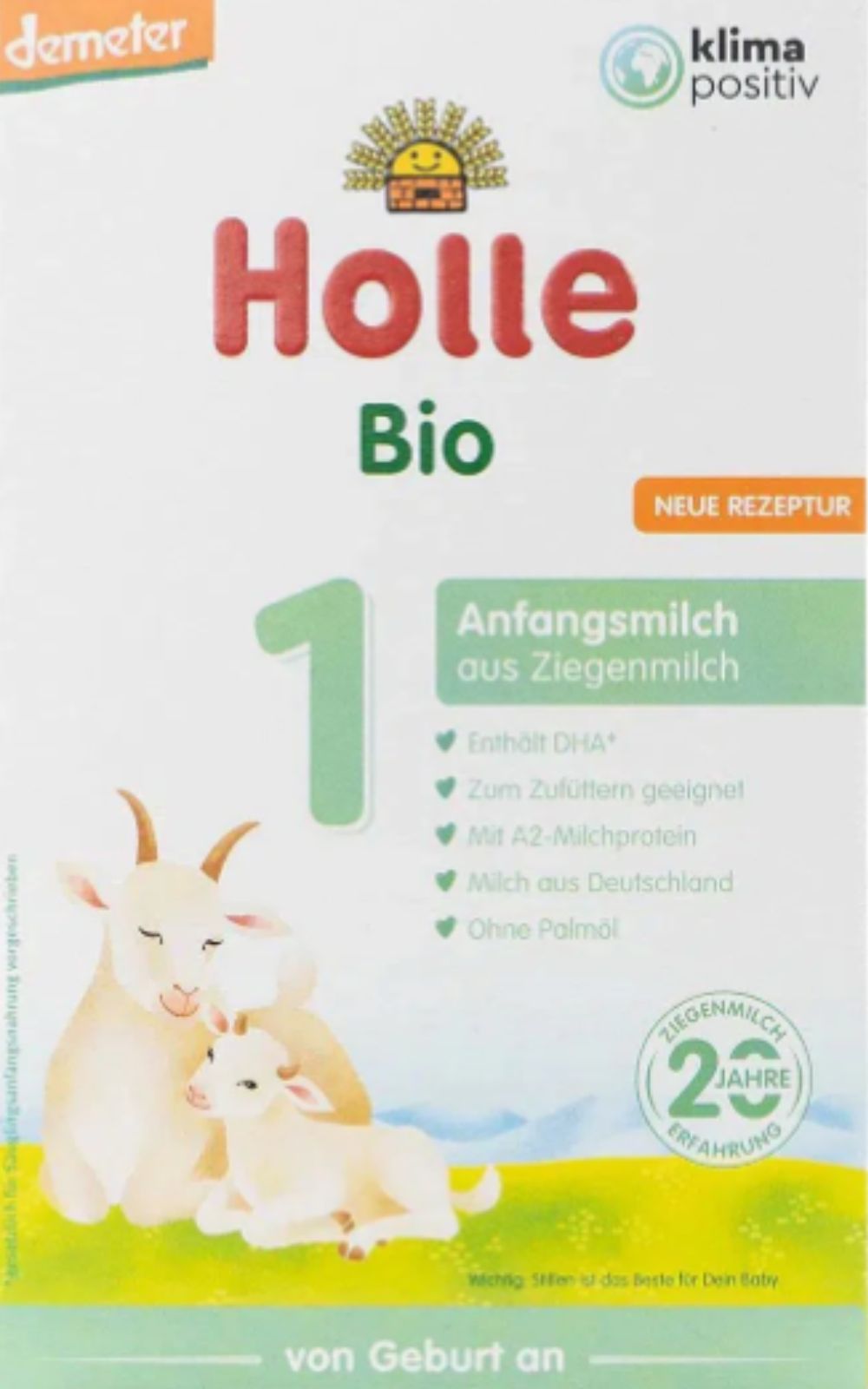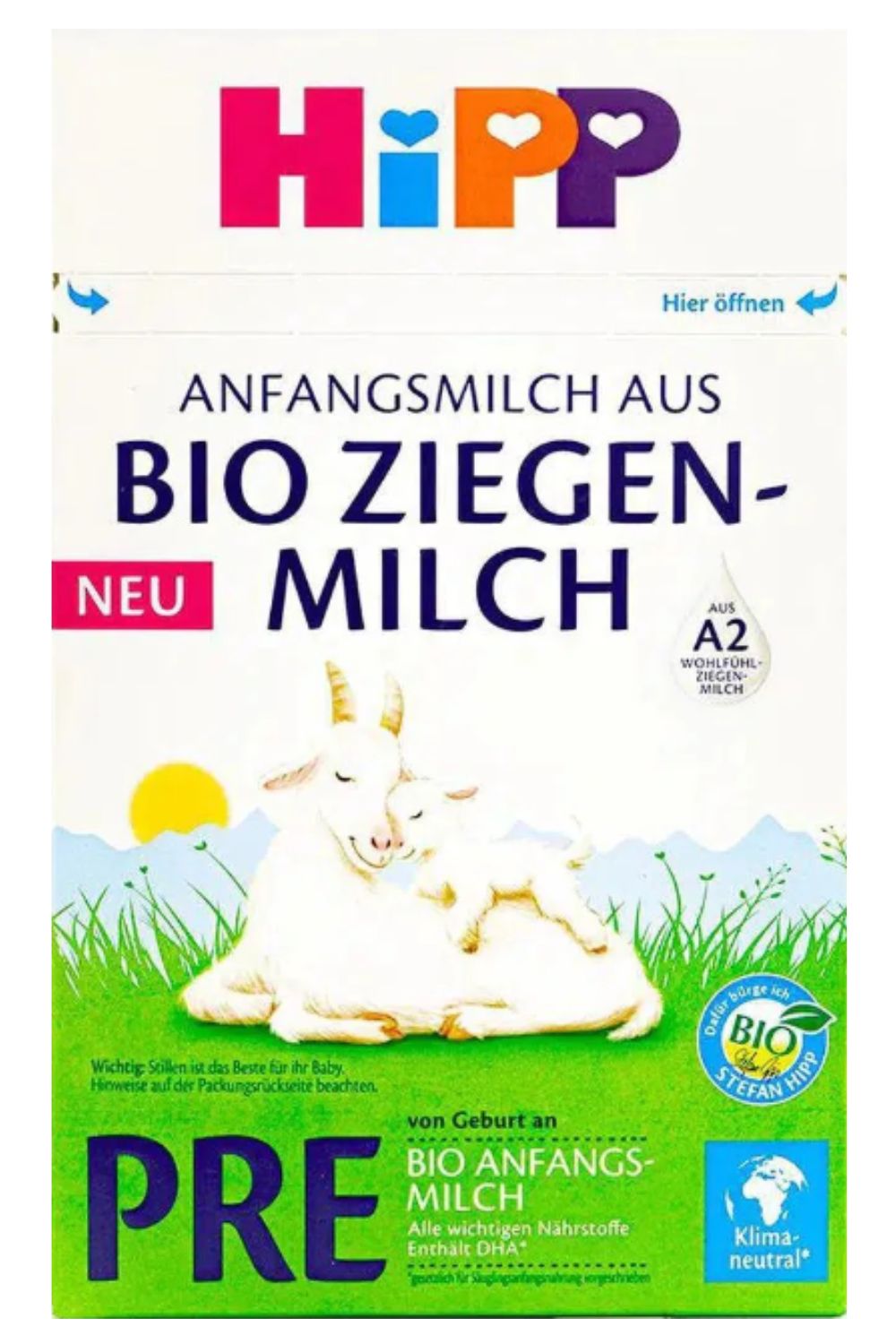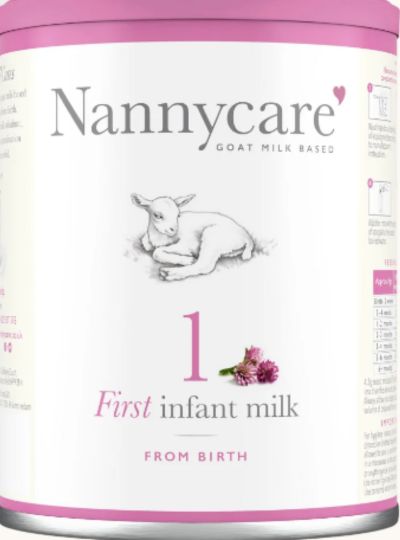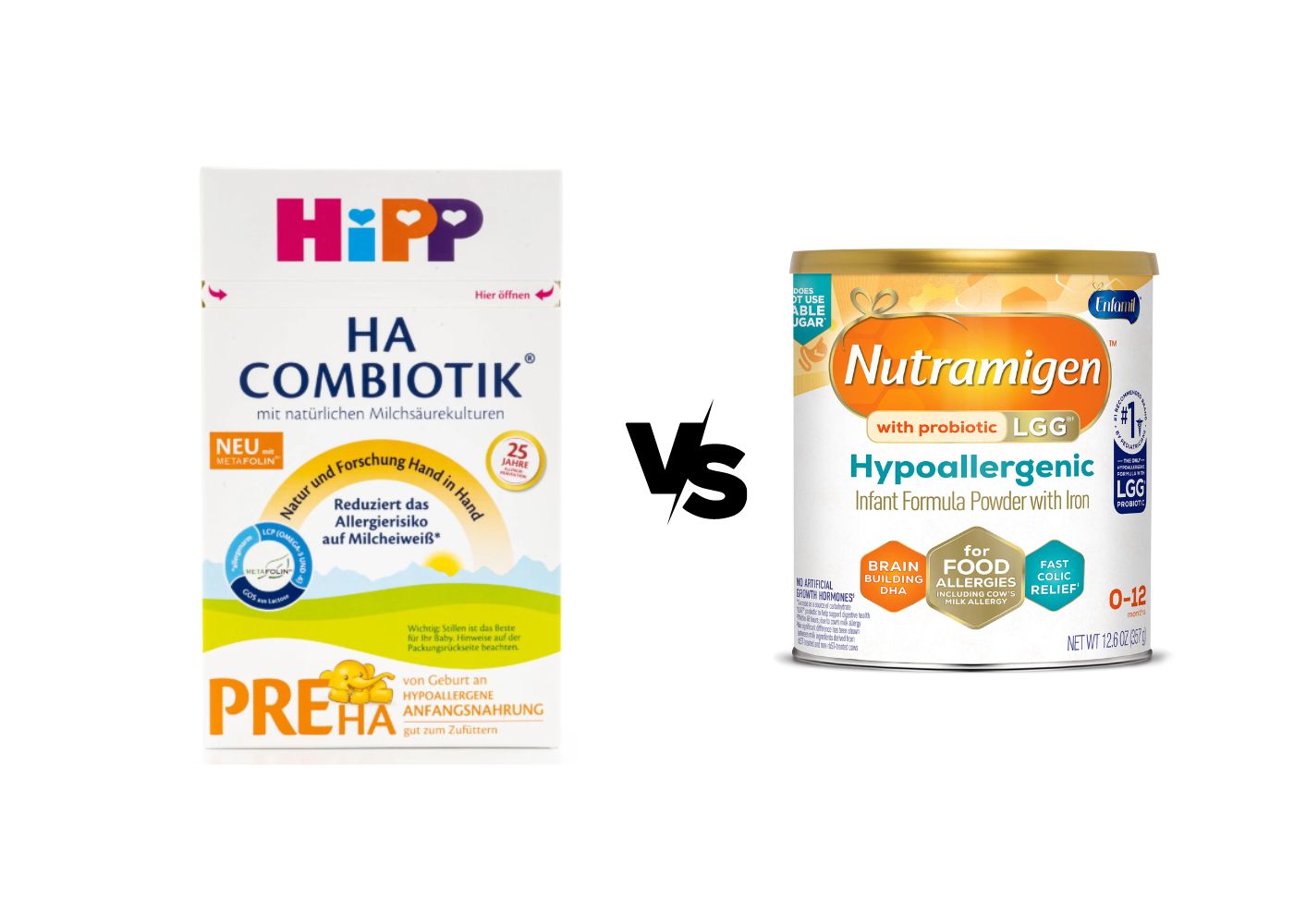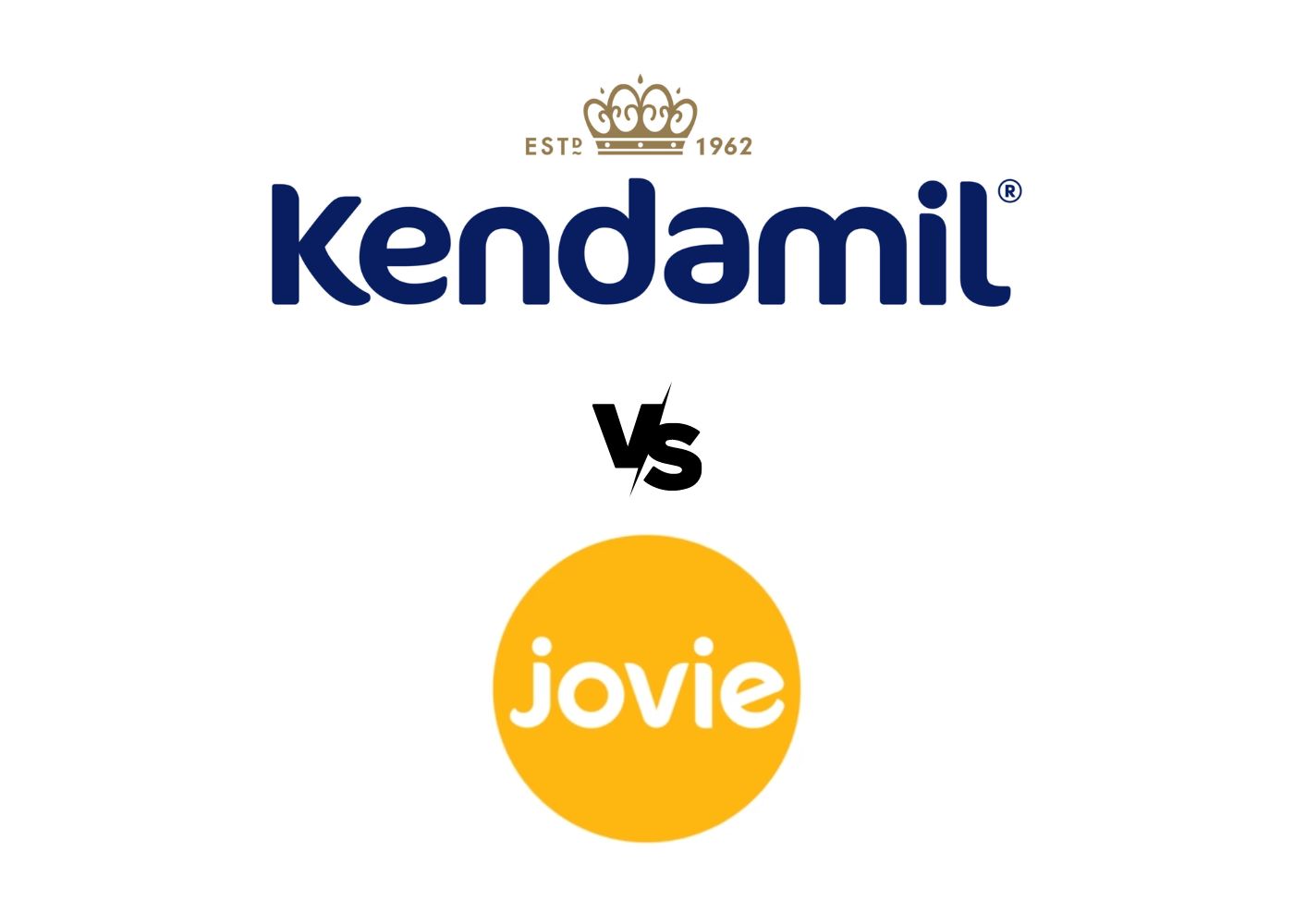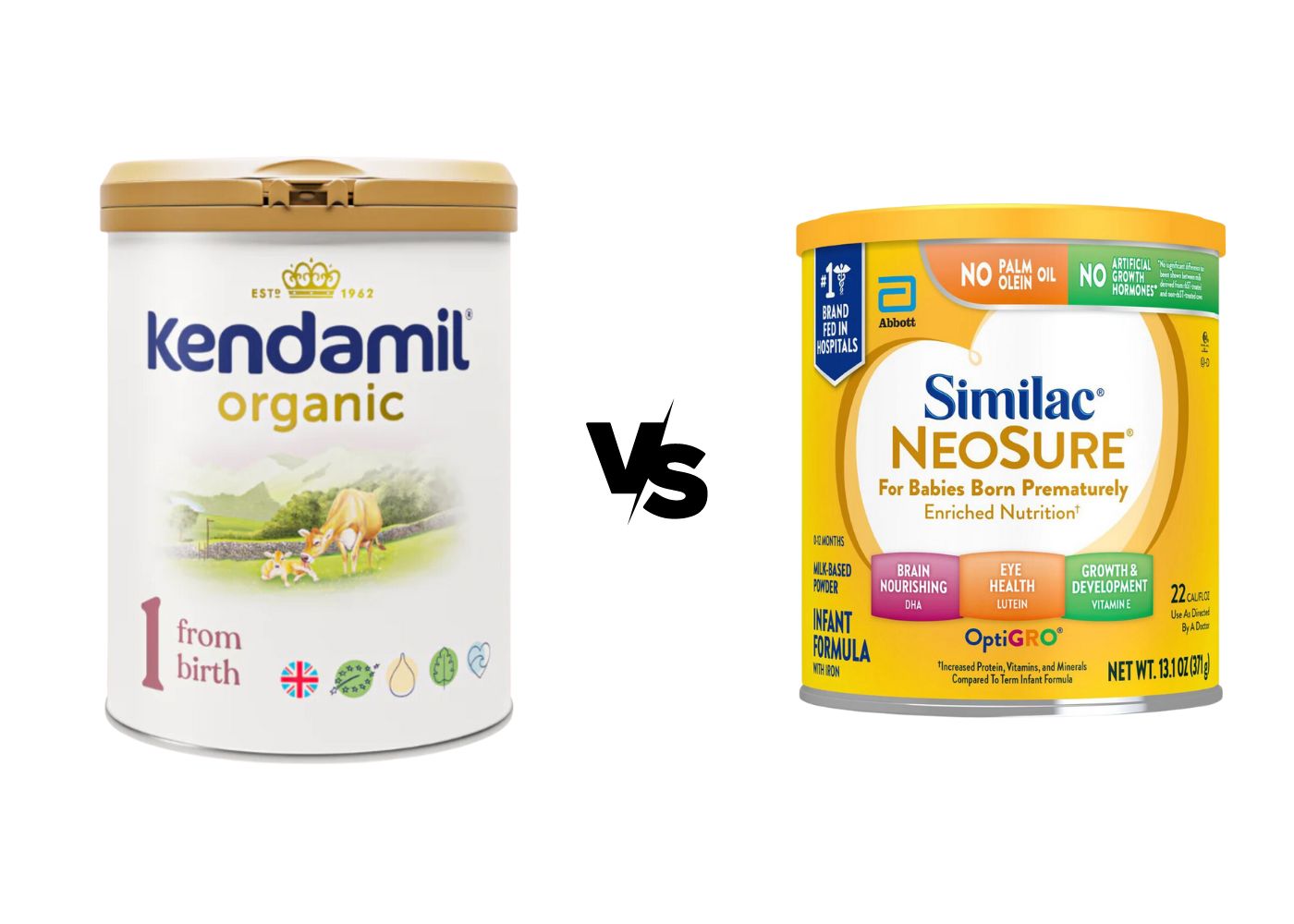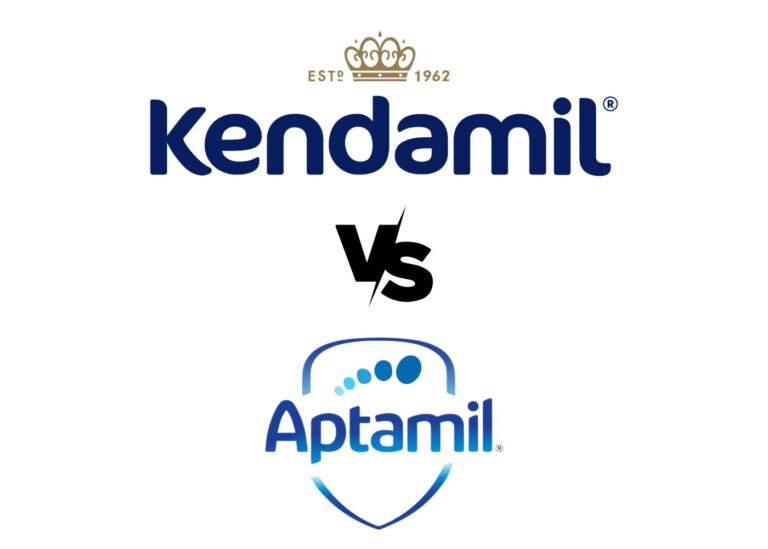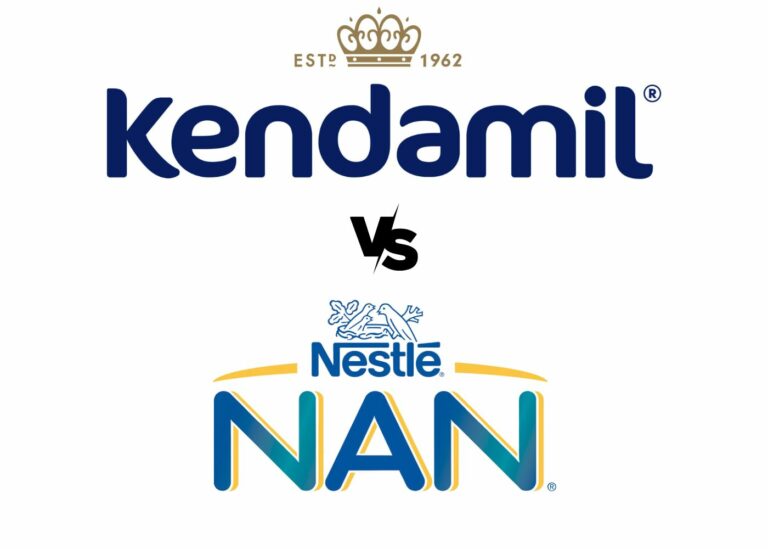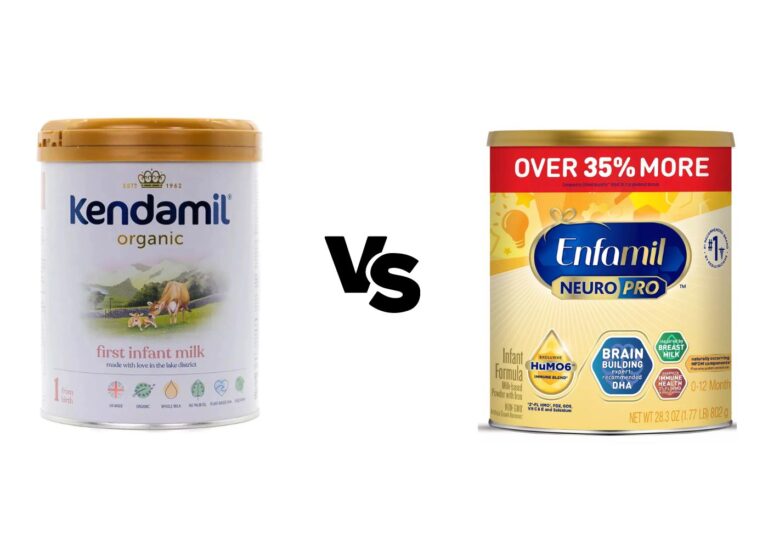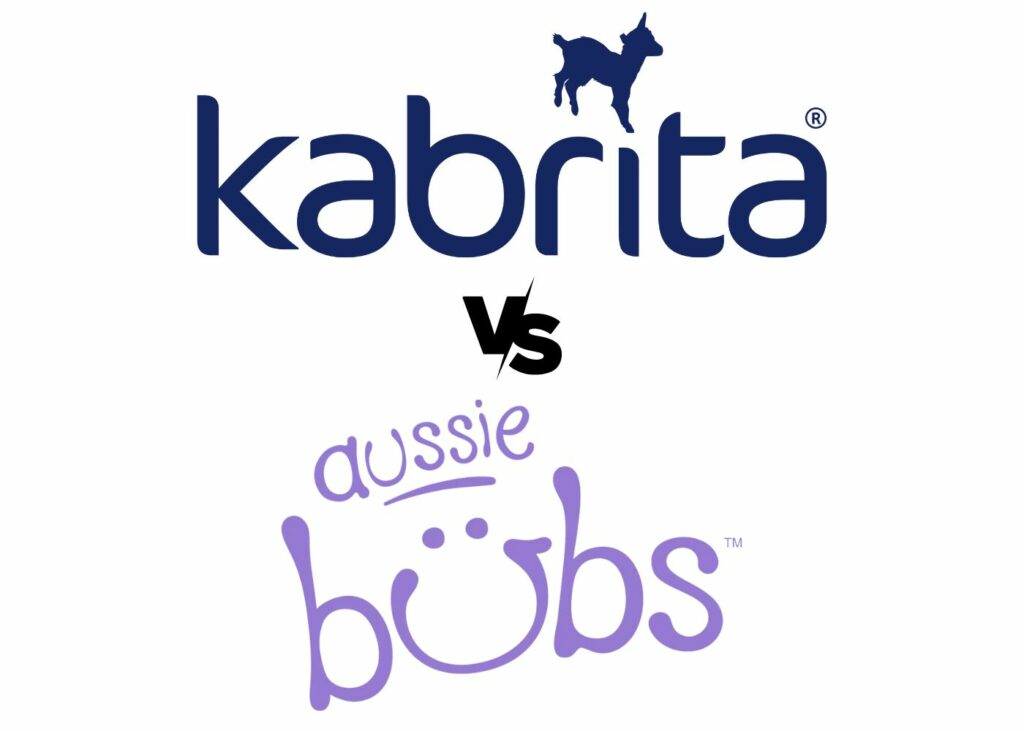
Key Differences Between Kabrita and Bubs
| Feature/Aspect | Kabrita | Bubs |
|---|---|---|
| Origin | Dutch | Australian |
| Protein Source | Skimmed goat milk, goat whey protein concentrate | Goat full cream milk solids, goat whey protein concentrate |
| Carbohydrate Source | Lactose | Lactose |
| Fat Blend | Coconut oil, rapeseed oil, sunflower oil, high sn-2 palmitic acid oil | Palm olein, high oleic sunflower oil, canola oil, sunflower oil, coconut oil |
| DHA/ARA Source | Fish oil (DHA), ARA (Omegas 3 and 6) | DHA sourced from algae |
| Special Ingredients | High sn-2 palmitic acid oil | Uses whole goat milk |
| Prebiotics | Galacto-oligosaccharides (GOS) | Galacto-oligosaccharides (GOS) |
| Probiotics | None | None |
| High Oleic Oils | None | High oleic sunflower oil |
| Canola Oil | None | Yes |
| Palm Olein | None | Yes |
| Nutritional Emphasis | Mimics human milk’s fat composition, easy digestion | Clean label, no additives, focuses on natural ingredients |
| Standards/Labels | Meets strict European standards | Clean Label Project’s Purity Award |
In this article, we will compare two popular goat milk formulas: Kabrita and Bubs.
We will analyze their ingredients and nutritional composition to help you make the best decision for your little one.
Let’s get after it!
Our Short Answer
After analyzing both formulas, we chose Kabrita for the following reasons:
- No high oleic oils.
- No canola oil.
- No palm olein.
Even though Bubs’ oils come from organic sources, there are more nutritionally complete choices.
Kabrita goes for coconut, rapeseed, sunflower, and a special kind of palm oil fat (high sn-2 palmitic acid oil) that’s better because it doesn’t mess with how the body absorbs fat and calcium.
Bubs does have a cool thing going for it — it uses whole goat milk, which makes its fat a bit better. But that’s not enough to outshine Kabrita.
Kabrita offers a gentle, nutritious alternative to cow's milk, perfect for newborns and infants up to six months. High-quality, non-GMO goat milk is easy on tiny tummies and packed with essential nutrients like calcium, protein, and prebiotics without any added sugars or artificial nasties.
- Made with high-quality, non-GMO goat milk
- Naturally easy to digest and gentle on little tummies
- Ideal for babies with cow's milk sensitivities or digestive discomfort
- Includes prebiotics for healthy gut flora and digestion
Overview of the Two Formulas
Kabrita uses Dutch goat milk, meeting European standards and offering easy digestion with a special fat blend and goat whey protein.
Bubs Goat, from Australia, emphasizes a clean label with no additives, focusing on natural ingredients and safety certifications.
Kabrita
Kabrita baby formula is made with high-quality Dutch goat milk.
Kabrita meets strict European standards for baby formulas, meaning it’s free from harmful stuff like pesticides or chemicals.
It includes a special fat blend similar to what’s found in human milk, making it easy for babies to digest and absorb nutrients.
It’s packed with goat whey protein and has about 10 times more oligosaccharides than cow’s milk, which are good for your baby’s tummy.
It adds 22 vitamins and minerals, including Vitamin A, calcium, and niacin, which are super important for your little one’s growth.
Kabrita smells and tastes mild and fresh, making it a hit with even picky eaters!
Bubs Goat
Bubs Goat formula comes from the heart of Australia, using natural milk from local farms.
This keeps the product fresh and tasty while ensuring high nutritional value.
Bubs Goat prides itself on being a clean-label product. That means no bad stuff like corn syrup solids, chemicals, artificial sweeteners or colors, GMOs, or maltodextrin.
It includes goat full cream milk solids as its base.
Also, it’s packed with essential fatty acids DHA (from algae) and ARA for brain development, alongside vitamins and minerals necessary from birth to toddlerhood.
Every batch of Bubs Goat formula is rigorously tested for safety before it hits the shelves.
Plus, it has earned the Clean Label Project’s Purity Award, showing their commitment to high quality and safety.
Nutritional Composition
Kabrita and Bubs Goat formulas both use goat milk for easier digestion, with Kabrita having a 50:50 whey-to-casein ratio and Bubs Goat a 60:40 ratio, closely mimicking breast milk.
Both utilize lactose as the sole carbohydrate source.
Kabrita’s fat blend, including coconut and fish oil, aims to replicate human milk’s fat composition more closely than Bubs, which uses a mix including palm olein, potentially less beneficial for absorption and bone health.
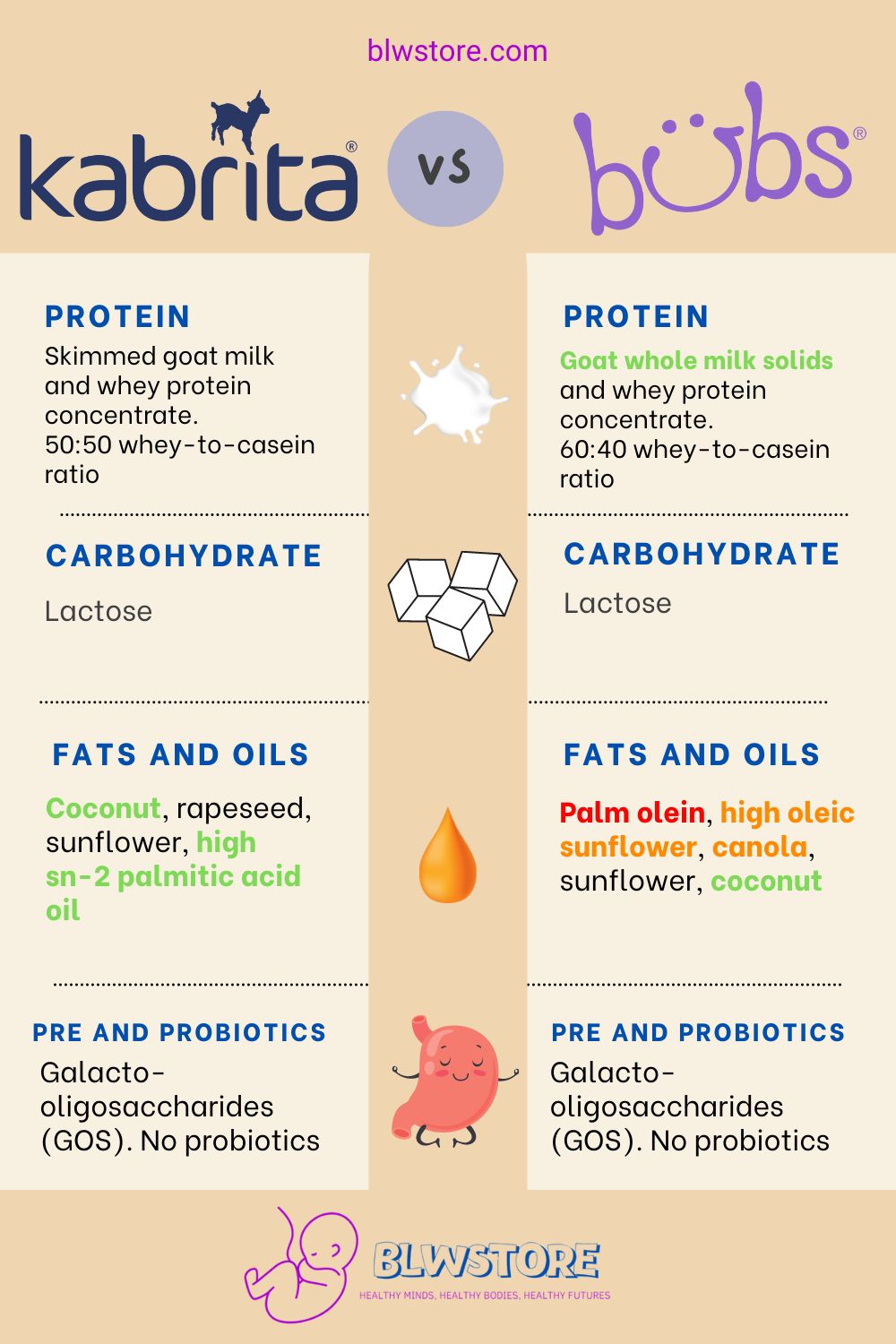
Protein Content
Kabrita: The protein in Kabrita formula comes mainly from skimmed goat milk and goat whey protein concentrate. Goat milk is known for being easier to digest than cow’s milk because of its unique protein structure. It has a 50:50 whey-to-casein ratio.
Bubs Goat: Bubs utilizes goat full cream milk solids and goat whey protein concentrate as protein sources. Like Kabrita, these sources provide gentler proteins in a baby’s digestive system compared to proteins from cow’s milk. It has a 60:40 whey-to-casein ratio.
In terms of protein content, both formulas follow the same approach: they use goat milk as their base. This makes them easier to digest for most babies compared to cow milk-based formulas. Bubs uses goat whole milk solids, which is great for fat content. Both formulas are great in terms of whey-to-casein ratio.
Carbohydrate Content
Kabrita: The only carbohydrate source in Kabrita is lactose from milk. This is similar to what babies get from breast milk, and it helps provide energy for your little one.
Bubs Goat: Like Kabrita, Bubs relies on lactose as its main carbohydrate source, ensuring the formula provides energy in a form similar to breast milk.
No differences and no complaints here, with both formulas using lactose as their sole carbohydrate, which is what we expect to see in conventional formulas.
Fats and Oils
Kabrita: Kabrita’s fat blend includes coconut oil, rapeseed oil, sunflower oil, and high sn-2 palmitic acid oil. It also adds DHA from fish oil and ARA (Omegas 3 and 6). This blend aims to mimic the fat composition found in human milk as closely as possible.
Bubs Goat: The fats in Bubs Goat formula come from a mix of sustainable palm olein, high oleic sunflower oil, canola oil, sunflower oil, and coconut oil. Bubs Goat also contains docosahexaenoic Acid (DHA) sourced from algae.
Here is where Kabrita shines. Its fat blend is clearly superior to Bubs’, thanks to avoiding high-oleic oils, canola oil, and palm olein (which is the refined version of palm oil and has been linked to lower calcium absorption if consumed regularly). These three oils are not among the optimal vegetable oils, nutritionally speaking.
| High sn-2 palmitic acid oil | Palm olein | |
|---|---|---|
| Structure | Similar to breast milk fat | Not that similar to breast milk fat |
| Digestion | Easier to digest and absorb | Harder to digest and absorb |
| Bowel Movements | Help reduce constipation | May cause constipation |
| Bone Development | Support bone health | May reduce calcium absorption |
Nutritional Facts Comparison Table
| Nutrient | Kabrita Stage 1 | Bubs Stage 1 |
|---|---|---|
| Energy | 67 kcal | 68 kJ |
| Total Fat | 3.5 g | 3.7 g |
| Linoleic Acid (Omega-6) | 540 mg | 600 mg |
| A-linolenic Acid (Omega-3) | 56 mg | 52 mg |
| Docosahexaenoic Acid (DHA) | 15 mg | 8.8 mg |
| Total Carbs | 7.5 g | 7.5 g |
| Galacto-Oligosaccharides (GOS) | 0.39 g | 0.33 g |
| Protein | 1.3 g | 1.5 g |
| Whey Protein | 0.84 g | 0.91 g |
| Casein Protein | 0.5 g | 0.60 g |
| Vitamin A | 59 mcg RE | 83 µg RE |
| Vitamin D3 | 1.5 µg | 1.1 µg |
| Vitamin E | 1.1 mg a-TE | 1.3 mg a-TE |
| Vitamin K1 | 5.5 µg | 6.8 µg |
| Vitamin C | 10.4 mg | 14 mg |
| Sodium | 21 mg | 23 mg |
| Vitamin B1 (Thiamin) | 62 µg | 95 µg |
| Vitamin B2 (Riboflavin) | 158 µg | 160 µg |
| Vitamin B6 (Pyridoxine) | 54 µg | 57 µg |
| Vitamin B12 | 0.2 µg | 0.49 µg |
| Niacin | 595 µg | 600 µg |
| Folate | 17.6 µg | 14 µg |
| Pantothenic Acid | 462 µg | 530 µg |
| Biotin | 1.8 µg | 3.7 µg |
| Calcium | 49 mg | 49 mg |
| Phosphorus | 30 mg | 30 mg |
| Magnesium | 5.6 mg | 5.9 mg |
| Iron | 0.5 mg | 0.78 mg |
| Zinc | 0.5 mg | 0.52 mg |
| Manganese | 7.9 µg | 16 µg |
| Copper | 50 µg | 80 µg |
Probiotics and Prebiotics
Probiotics and prebiotics can be super helpers for some babies. They work together like a team. Probiotics are good bugs that live in our guts and keep our tummy happy. Prebiotics are food for these good bugs.
Kabrita: Kabrita formula uses Galacto-oligosaccharides (GOS), a type of prebiotic. These prebiotics come from lactose and help feed the friendly bacteria in your baby’s gut. Kabrita does not add probiotics.
Bubs Goat: Similar to Kabrita, Bubs Goat formula includes Galacto-oligosaccharides (GOS) as its source of prebiotics, fostering a nurturing environment for good bacteria in the gut. Bubs does not add any probiotics either.
Best Places to Buy Kabrita and Bubs
Kabrita
If you live outside of Europe, your best bets are Mommy Formula and The Milky Box.
Kabrita offers a gentle, nutritious alternative to cow's milk, perfect for newborns and infants up to six months. High-quality, non-GMO goat milk is easy on tiny tummies and packed with essential nutrients like calcium, protein, and prebiotics without any added sugars or artificial nasties.
- Made with high-quality, non-GMO goat milk
- Naturally easy to digest and gentle on little tummies
- Ideal for babies with cow's milk sensitivities or digestive discomfort
- Includes prebiotics for healthy gut flora and digestion
Bubs
You can find Bubs formula in the following places:
- Bubs’ official website (only if you live in Australia)
- Target (For US parents)
- Walmart (For US parents)
What are the Best Goat Milk Formula Alternatives to Kabrita and Bubs?
While Kabrita and Bubs are great goat milk formulas, they are not organic, and if you want an organic goat milk formula, here are our top recommendations:
Holle Goat: Known for its organic and high-quality ingredients, Holle Goat is a popular option for parents looking for goat milk formula. *Read. Holle vs Kabrita
Holle Stage 1 Infant Formula is a nourishing, organic goat milk option for babies.
- Organic and Gentle: Made with EU-certified organic whole goat milk, easier to digest than cow's milk.
- Simple Ingredients: Free from corn syrup, starch, artificial sweeteners, flavors, GMOs, and preservatives; aims to mimic breast milk closely.
- Digestive Support: Soft on sensitive stomachs, potentially easing constipation, gas, and colic.
- Nutritionally Complete: Includes ARA and plant-based DHA, supporting natural digestion and overall health.
Hipp Goat: Hipp is renowned for its commitment to sustainable farming and offers a goat milk formula under its Dutch range. *Read: Hipp vs Kabrita
HiPP Organic Goat’s Milk Formula offers a gentle start with naturally mild organic goat's milk, free from A1 beta-casein, and enriched with prebiotics, making it ideal for sensitive babies.
- HiPP Organic Goat Milk Formula
- EU Organic certified
- Gentle A2 goat milk
- Contains ARA & DHA
- Mimics breastmilk
- Enriched with prebiotics
NannyCare: Technically not organic, but very close. Made from 100% goat milk, is a popular choice among parents looking for a goat milk formula as pure and simple as possible. *Read: NannyCare vs Kabrita
Crafted with minimally processed whole goat milk, it's a naturally easier-to-digest option that supports your little one's gut health. Perfect for babies with sensitive tummies.
- Easier-to-digest protein
- Lower allergen profile
- Whole goat's milk base, no whey added
- Sourced from grass-fed goats on New Zealand family farms
- Free from maltodextrin, palm oil, GMOs, and soy
- Contains natural prebiotics for gut health
Last Words
We hope this comparison between Kabrita and Bubs has helped you choose the best goat milk formula for your little one.
If you have further questions, leave a comment below or contact us at [email protected].
Happy feeding!
We’re Maria and Alberto, a married couple and educators who are nutrition enthusiasts. Even before we had kids, we were already crazy about nutrition.
We’d read scientific articles, watch videos from nutritionists, and spend hours listening to nutrition podcasts.
Today, we continue doing this, but in a different way, as we’ve learned to sift through the noise and trends. Nutrition, like any other field of knowledge, the more you read and learn, the more you develop a comprehensive understanding of reality, and that’s what has happened to us.
Before having our first child, we focused on learning everything we could about child nutrition, using the same techniques we had already employed, backed by our extensive knowledge in nutrition.
Our mission is to help other parents with their children’s nutrition, to help them become the best versions of themselves.
If we are what we eat and drink, which is absolutely true, let’s do it right!


